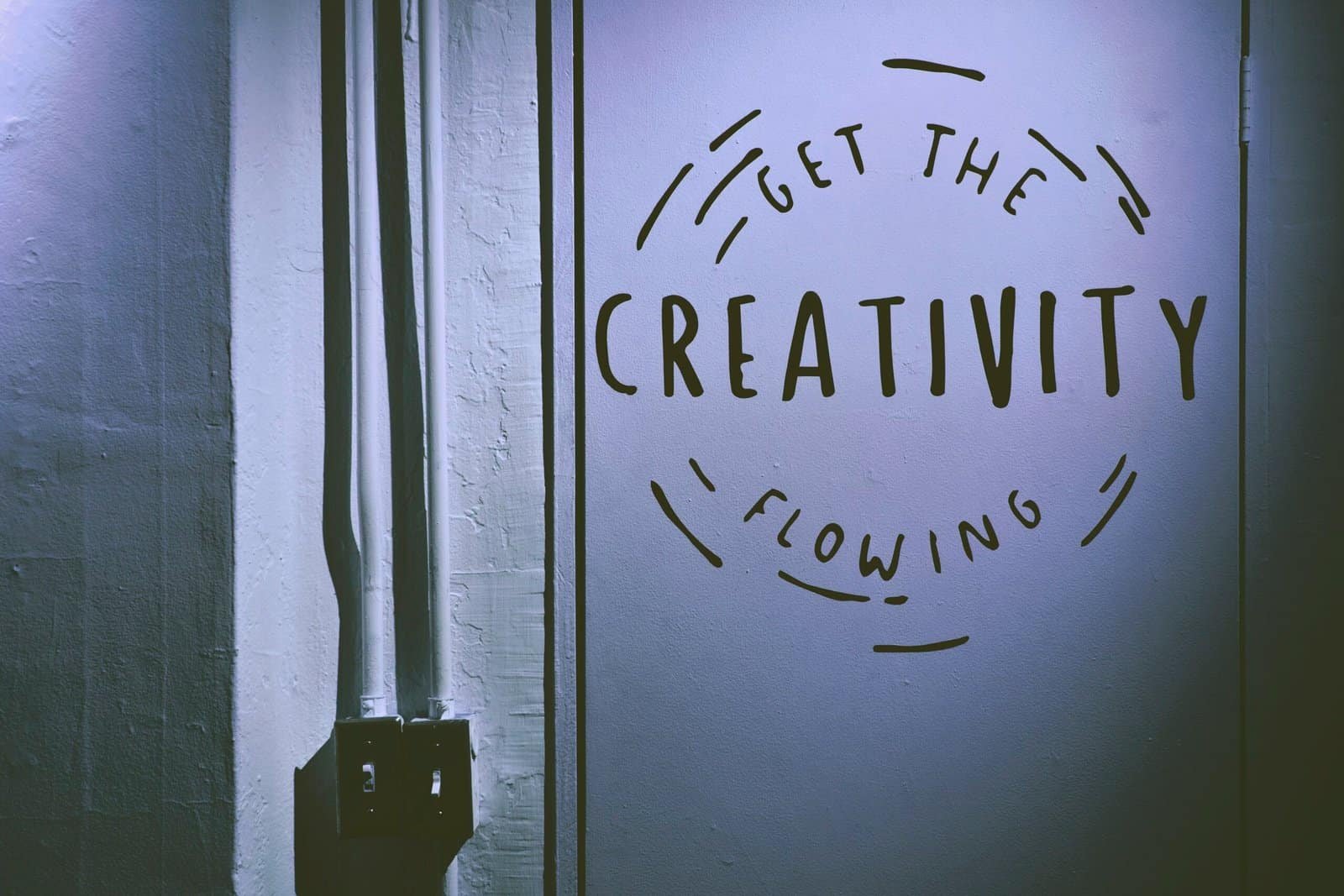Have you ever wondered why some freelancers seem to stay inspired every single day while others drift in and out of motivation?

What Routines Help Freelancers Stay Inspired Daily?
This article will guide you through practical, repeatable routines that help freelancers maintain steady inspiration. You’ll get concrete examples, science-backed strategies, and easy-to-apply rituals to keep creativity flowing through workdays and off days alike.
Why Routines Matter for Freelancers
Routines provide structure that conserves creative energy for the work that actually matters. When you automate low-value decisions—like when to start your day, what to do after lunch, or how to close your day—you free up mental bandwidth for idea generation and creative problem-solving.
Routines also signal to your brain when it’s time to be productive and when it’s time to rest. This Pavlovian effect helps you enter a creative state more quickly and consistently, reducing the friction that turns good intentions into procrastination.
The Science Behind Routine and Creativity
Understanding why routines help can motivate you to stick with them. Regular patterns stabilize your circadian rhythms, reduce decision fatigue, and improve sleep quality—all of which support cognition and creative thinking.
Consistency triggers neural pathways that make certain behaviors easier over time. The more you repeat a creative ritual, the faster and more automatic the transition to a productive state becomes, so you can spend less time ramping up and more time producing valuable work.
Designing Your Ideal Day: Key Principles
Designing a daily routine starts with clear priorities and realistic timing. You can’t optimize every minute—so focus on high-impact anchors: morning, mid-day reset, and evening wind-down.
Think in terms of energy cycles. Schedule deep creative work when your energy peaks and administrative or shallow tasks when your energy dips. Use small rituals to bridge those transition points.
Morning Routines to Kickstart Inspiration
Your morning routine sets the emotional and cognitive tone for the day. Aim for rituals that energize you physically, center you mentally, and orient you toward meaningful work.
Start with movement, hydration, and a brief period of reflection. Light exercise or stretching helps blood flow and clarity, while a quick journaling or planning session primes your brain for the day’s creative tasks.
Examples of Morning Rituals
Build a short set of consistent behaviors you can do in 20–60 minutes. That predictability reduces friction and signals creative readiness.
- Drink a glass of water and do 5–15 minutes of movement.
- Spend 10 minutes journaling a gratitude list or brainstorming ideas.
- Review your top 1–3 priorities for the day and block time for them.
A Simple 30-Minute Morning Routine
A compact routine can be highly effective if you keep it consistent. You don’t need an elaborate morning to create momentum.
- 5 minutes: Hydrate and breathe deeply.
- 10 minutes: Movement (yoga, brisk walk, or stretching).
- 10 minutes: Brain-dump or creative prompt (write an idea or solve a micro-problem).
- 5 minutes: Prioritize 3 tasks and set a start time for deep work.
Midday Routines to Sustain Flow
The midday routine is about maintaining momentum and avoiding the post-lunch slump. Small rituals can reset your attention and preserve inspiration into the afternoon.
You’ll want to take a meaningful break that includes physical activity and a change of scenery. Even a short walk or a focused 15-minute creative exercise can be enough to re-energize you.
Power Lunch and Reset Strategies
Avoid multitasking during lunch. Use the time to nourish your body and reset your mind, and you’ll return to work with higher focus and creativity.
- Eat a balanced meal and step away from screens.
- Take a 10–20 minute walk outdoors if possible.
- Do a quick creative warm-up—sketch, free-write, or read a short piece of inspiring content.

Afternoon and Evening Routines for Recovery and Reflection
How you end your day determines how well you’ll start the next one. Your evening routine should prioritize recovery, reflection, and a gentle mental transition away from work.
An evening wind-down reduces residual stress and primes your brain for restorative sleep. This might include a short reflection on wins, a to-do capture for tomorrow, and a tech-light period before bed.
Evening Wind-Down Examples
Create rituals that help you unplug and process the day, making it easier to start fresh tomorrow.
- 10 minutes: Review accomplishments and lessons.
- 10 minutes: Capture and prioritize tomorrow’s tasks.
- 20–60 minutes before bed: Low-stimulation activities like reading or light stretching.
Workspace Routines: Organize for Creativity
Your physical environment influences your mental state. Small, consistent rituals around your workspace can signal the start and end of focused work periods, and keep clutter from sabotaging your inspiration.
Set a ritual for preparing your workspace each morning and for shutting it down at the end of the day. Keep tools and resources organized so you spend less time searching and more time creating.
Workspace Ritual Ideas
You’ll want to make your workspace a reliable cue for productive thinking.
- Morning: Clear the desk, make a drink, set a single timer for your first work block.
- Midday: Tidy for 2–5 minutes and change your location or posture.
- End of day: Close tabs, clean surface, and place a small object that signals “work is done.”
Habit Stacking: Make Routines Stick
Habit stacking is the practice of attaching a new habit to an established one, making adoption easier. You’ll use existing cues to build new, consistent behaviors.
Identify reliable anchors—like brushing your teeth, starting your computer, or finishing lunch—and attach a small creative habit immediately after. Over time the new habit becomes as automatic as the anchor.
Practical Habit Stack Examples
Use habit stacks that take less than five minutes to avoid resistance.
- After you make your morning coffee, write one sentence of a project.
- After lunch, do a 10-minute creative warm-up.
- After finishing client work, capture one idea for a personal project.

Creative Rituals and Warm-Ups
Creative work benefits from warm-ups much like athletic performance. Quick, low-stakes exercises prime your brain and reduce the fear of starting.
You can use prompts, timed sketches, idea lists, or sensory changes as warm-ups. Rotate warm-ups to keep them fresh and prevent them from becoming rote.
Warm-Up Exercises You Can Do Daily
Keep a short list of activities you can pick from when you need to get into a creative headspace quickly.
- 5-minute free-writing on a random prompt.
- 10 rapid sketches or thumbnails.
- 6-3-1 idea sprint: 6 ideas, narrow to 3, choose 1 to sketch in detail.
Time-Boxing and Deep Work Blocks
Time-boxing helps you commit to focused work and creates urgency that boosts creativity. Deep work blocks are uninterrupted periods dedicated to cognitively demanding tasks.
Create 60–90 minute blocks when you’re less likely to be interrupted, and enforce strict boundaries—notifications off, clear status for clients, and a visible “do not disturb” sign if necessary.
Structuring Deep Work Sessions
A simple formula makes deep work easier to follow and sustain.
- 5 minutes: Prepare—clear your desk and set a specific goal.
- 60–90 minutes: Focused work with no interruptions.
- 10–15 minutes: Short recovery—stand, walk, or do breathing exercises.
Dealing with Creative Blocks
Blocks are normal and manageable. Rituals that help you step away from, reframe, or reduce pressure can break them quickly.
Use micro-routines like 10-minute idea sprints, change of scenery, or conversation with a peer to reset your perspective. Often the solution is less about forcing creativity and more about creating conditions for it to return.
Practical Block-Breaking Tactics
Experiment with different low-stakes interventions until you find what reliably works for you.
- Set a 10-minute timer and commit to generating anything—no judgment.
- Switch to a different medium or task for 20–30 minutes.
- Talk through the problem with a colleague or friend for 10 minutes.

Movement, Sleep, and Nutrition Routines
Physical health routines strongly influence mental energy and inspiration. Consistent sleep, regular movement, and balanced nutrition will make your creative output more sustainable.
You don’t need to overhaul everything at once—start with small, consistent changes like regular sleep times, midday walks, and protein-rich breakfasts to stabilize energy levels.
Simple Health Habits to Include
These behaviors are easy to stack into your day and yield high returns for mental clarity.
- Maintain a consistent bedtime and wake time.
- Take short movement breaks every 60–90 minutes.
- Keep nutrient-dense snacks available to avoid energy crashes.
Social Routines: Clients, Peers, and Community
Creativity thrives in conversation. Regular social routines—client check-ins, co-working sessions, or creative meetups—keep ideas fresh and provide accountability.
Set weekly or biweekly touchpoints that involve others. These interactions can spark new perspectives and help you avoid isolation, which often drains inspiration.
Building Regular Social Rituals
Social routines can be brief but structured to deliver maximum creative benefit.
- Weekly creative critique session with peers for 30–60 minutes.
- Twice-weekly co-working sessions where you work alongside others remotely.
- Monthly “show-and-tell” where you share progress and get feedback.
Weekly and Monthly Routines for Long-Term Inspiration
Daily routines sustain momentum, but weekly and monthly rituals help you steer the ship. Use periodic reviews to recalibrate goals, purge stale projects, and plan for creative growth.
You’ll benefit from a simple weekly review to assess wins and obstacles, and a monthly planning session to set ambitious but realistic targets.
Weekly and Monthly Ritual Examples
Make these rituals predictable so you maintain perspective and avoid reactive work cycles.
- Weekly: 30–60 minute review of goals, wins, and blockers; plan next week’s key tasks.
- Monthly: One-hour creative audit—review portfolio, update goals, plan experiments.

Tracking Inspiration and Progress
You can track inspiration like any other resource. Simple logs or habit trackers help you identify patterns and make informed changes to your routine.
Track variables such as energy levels, number of creative outputs, or hours spent in deep work to see what correlates with your most inspired days.
Sample Tracking Table
Use this format to record and analyze your creative patterns over a week.
| Metric | Day 1 | Day 2 | Day 3 | Day 4 | Day 5 | Day 6 | Day 7 |
|---|---|---|---|---|---|---|---|
| Sleep hours | 7.5 | 6.8 | 8.0 | 7.0 | 7.2 | 8.1 | 7.6 |
| Deep work hours | 3.0 | 4.0 | 2.5 | 3.5 | 1.5 | 2.0 | 3.0 |
| Inspiration score (1-10) | 8 | 7 | 6 | 9 | 4 | 5 | 8 |
| Notes (what helped) | Morning walk | Coffee + focus block | Restless | Brainstorming call | Too many meetings | Errands | Good sleep |
This table helps you see what conditions align with your best creative days, so you can replicate them.
Tools and Apps to Support Routines
You don’t need fancy tools to stay inspired, but a few well-chosen apps can reinforce your routines. Pick tools that simplify rather than complicate your process.
Consider using a timer app for deep work, a habit tracker for consistency, a note-taking tool for idea capture, and a calendar for time-blocking.
Recommended Toolset
These categories cover the essentials without overwhelming you.
- Timer: Pomodoro or customizable focus timer.
- Notes: Lightweight note app for quick capture.
- Tasks: Simple task manager for top priorities.
- Habit tracker: Visual habit streaks to maintain momentum.
Balancing Client Work and Personal Projects
You’ll likely juggle client obligations and your own creative pursuits. Routines help you allocate dedicated time so personal projects get consistent attention.
Treat personal projects as scheduled commitments by blocking time each week. This prevents them from being crowded out and keeps your long-term creative vision alive.
Scheduling Strategy
Create a predictable pattern so neither client work nor personal projects starve for attention.
- Block 3–6 hours per week for personal projects in focused sessions.
- Protect at least one daily deep work block for your most important project.
- Use Fridays or a specific morning for exploratory or experimental work.
Creative Inputs: Feeding Inspiration Regularly
Inspiration is input-driven. Regularly expose yourself to new ideas, art, and conversations to replenish your creative well. Curate small daily inputs rather than binging infrequently.
Micro-doses of inspiration—short readings, podcasts, or visual moodboards—can produce big returns over time and prevent creative droughts.
Daily Input Ideas
These activities are easy to fit into short gaps and become powerful over time.
- Read a 10-minute article on a subject outside your niche.
- Save three visual references to a moodboard each day.
- Listen to a short podcast episode that challenges your assumptions.
Minimizing Distractions Within Your Routine
Distractions erode creative momentum. Design routines that minimize interruptions and set expectations with clients and household members.
Solution-focused signals—like a visible schedule, a “do not disturb” sign, or scheduled email times—help maintain longer blocks of uninterrupted attention.
Practical Anti-Distraction Steps
Implement clear rules that protect your deep work and build consistency.
- Turn off non-essential notifications during deep work.
- Schedule specific email and slack windows.
- Communicate your working hours and response expectations to clients.
Sample Daily Routines (Table)
Use these sample routines as templates. Tweak times and activities to fit your energy patterns and responsibilities.
| Time | Routine — Creative Focused Day | Routine — Client-Focused Day |
|---|---|---|
| 6:30–7:00 | Hydrate, light exercise, 10-min journaling | Hydrate, quick stretch, review client inbox |
| 7:00–8:30 | Deep work: creative project | Deep work: high-priority client deliverable |
| 8:30–9:00 | Breakfast and short walk | Breakfast and client calls prep |
| 9:00–11:00 | Client work / meetings | Block: client meetings & emails |
| 11:00–12:00 | Creative warm-up / concepting | Admin tasks and follow-ups |
| 12:00–13:00 | Lunch and reset walk | Lunch and brief personal project time |
| 13:00–15:00 | Deep work: design/writing | Focused client work block |
| 15:00–16:00 | Feedback / collaboration sessions | Project planning and status updates |
| 16:00–17:00 | Tidy workspace, review tomorrow | Wrap up client work, prepare deliverables |
| 17:00–18:00 | Light reading or creative hobby | Light reading or personal project warm-up |
| Evening | Wind-down routine: reflection, tech-light | Wind-down routine: capture ideas for tomorrow |
These templates help you see how to structure days that prioritize both inspiration and income.
Common Routine Pitfalls and How to Avoid Them
Routines fail when they’re too rigid, overly ambitious, or unsupported by your environment. You’ll want to start small, iterate, and allow for flexibility.
If a routine feels like a chore, adjust the scale or timing rather than abandoning it. Track progress and celebrate small wins to reinforce positive behavior.
Troubleshooting Tips
When a routine breaks down, troubleshoot systematically.
- If you miss mornings: shift the routine later rather than skipping entirely.
- If you feel bored: rotate warm-ups and creative inputs.
- If interruptions persist: communicate boundaries and protect at least one deep work block.
Maintaining Inspiration During Busy or Slow Periods
Both overwork and underwork can kill inspiration. Routines sustain you through spikes of demand and stretches of downtime by preserving rhythm.
During busy times, shorten and preserve high-impact rituals. During slow periods, increase exploratory and playful activities to generate new opportunities and ideas.
Scaling Your Routines
Adapt your routines to your workload without losing the core anchors.
- Busy periods: Reduce rituals to 10–20 minute versions while keeping them consistent.
- Slow periods: Add experiments, learning, and community engagement to stay active.
Creating a Personalized Routine Plan
Your ideal routine comes from trial and error. Start with a baseline, monitor what works, and iterate monthly. Keep the elements that consistently increase your inspiration and drop those that don’t.
Document your routine and the evidence you gather (tracking tables, notes) so you can make rational adjustments rather than emotional ones.
5-Step Routine Design Process
Follow these steps to refine your daily rituals:
- Identify your energy peaks and troughs.
- Choose 3 daily anchors: morning, midday reset, evening wind-down.
- Pick 2 weekly rituals: review and creative experiment.
- Track outcomes for 4 weeks using a simple table.
- Adjust and repeat.
Quick Checklist You Can Use Today
Create a one-page checklist to make immediate improvements. Small, consistent changes yield compounding creative benefits.
- Set a consistent wake-up and sleep time.
- Reserve one uninterrupted deep work block daily.
- Take a midday walk and eat without screens.
- Capture one creative idea or note each morning.
- End the day with a 10-minute review and next-day plan.
Final Encouragement
Routines aren’t creative handcuffs—they’re scaffolding that supports your freedom to create. When you design consistent rituals that respect your energy, environment, and goals, you’ll find inspiration shows up more reliably and stays longer.
Make small, sustainable changes, track what matters, and treat your routine as a living system you refine over time. You’ll be able to produce quality work without burning out, and your daily inspiration will feel less like luck and more like the natural outcome of good practice.
